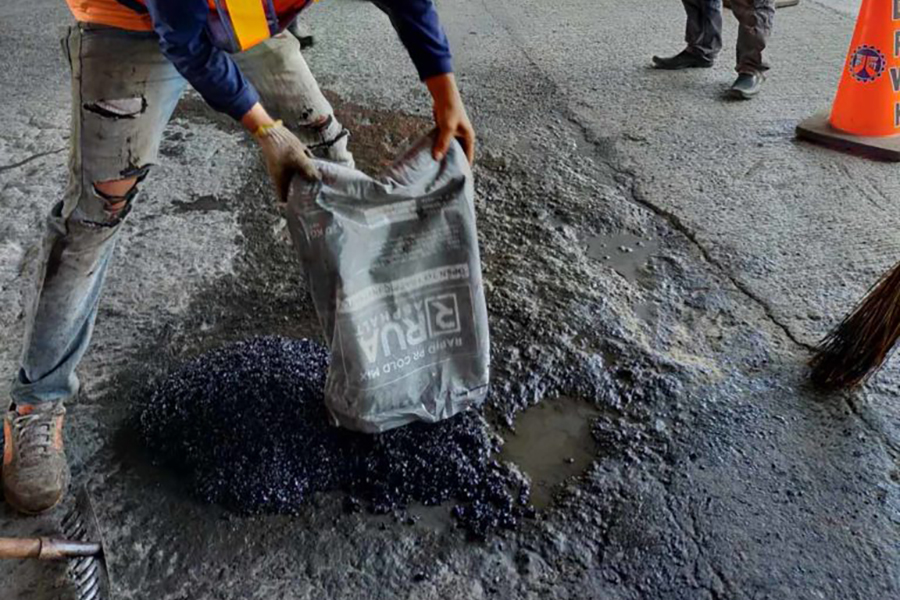Hot Mix Asphalt Paving: Elevating Commercial Parking Lot Requirements
Hot Mix Asphalt Paving: Elevating Commercial Parking Lot Requirements
Blog Article
Opening the Secrets of Warm Mix Asphalt Technology
Discovering the depths of warm mix asphalt innovation uncovers a world where specific solutions and careful processes merge to form our roads and infrastructure. The fusion of accumulations, binders, and fillers isn't just a construction job but a strategic orchestration of sturdiness and performance. As we peer right into the detailed dancing of components, a tapestry of resilience and sustainability unfolds. However what lies below this surface of asphaltic proficiency, and what tricks wait to be introduced in the world of leading innovations?
Significance of Warm Mix Asphalt
Hot Mix Asphalt plays an essential duty in contemporary framework advancement as a result of its durability and cost-effectiveness. As one of the most commonly made use of paving product for roads, freeways, and car park, Hot Mix Asphalt uses a series of benefits that add to its significance in construction jobs. One vital advantage is its capability to withstand rush hour lots and harsh weather problems, providing a dependable and durable surface for transportation networks. In Addition, Hot Mix Asphalt is economical in both first construction and long-lasting maintenance, making it a preferred option for lots of framework tasks.
The longevity of Hot Mix Asphalt comes from its make-up, which includes accumulations, binder, and filler products that are meticulously picked and blended to fulfill certain performance demands. This accurate combination causes a solid and adaptable sidewalk that can withstand frequent usage without substantial deterioration. Warm Mix Asphalt is 100% recyclable, additional enhancing its sustainability and ecological advantages. In general, the importance of Hot Mix Asphalt in framework growth can not be downplayed, as it remains to be a keystone of contemporary construction techniques.
Parts of Asphalt Mixes
The composition of asphalt blends consists of meticulously chosen aggregates, binder, and filler materials that are vital for accomplishing specific performance needs. Aggregates are the key element of asphalt mixes, providing stamina and security. The binder, commonly bitumen or asphalt concrete, holds the accumulations with each other and supplies flexibility and longevity to the mix.
The mix and percentage of these elements play a considerable duty in establishing the top quality and performance of the asphalt mix. Engineers carefully design the mix to satisfy particular demands, thinking about factors like website traffic quantity, environment conditions, and sidewalk life expectancy. Appropriate selection and balancing of accumulations, binder, and fillers are important for creating durable, long-lasting asphalt sidewalks.
Combining and Production Methods

When the accumulations are picked, the binder, often asphalt cement, is included in bind the products with each other. The binder's quality and quantity considerably impact the mix's flexibility, strength, and resistance to environmental factors. Additionally, fillers like moisturized lime or Rose city cement may be integrated to enhance specific characteristics of the asphalt mix, such as its workability or dampness resistance.
Throughout production, the aggregates and binder are warmed, commonly in between 250-325 ° F(121-163 ° C ), to assist in mixing and ensure correct finish of the aggregates. The blending procedure should be comprehensive to achieve an uniform mix that promotes the wanted efficiency qualities of the asphalt. Numerous methods, such as batch blending or drum blending, are employed to attain high-grade and regular asphalt mixes for construction tasks.
Elements Affecting Asphalt Efficiency
Elements affecting asphalt performance incorporate a series of variables that influence the toughness, longevity, and total quality of asphalt sidewalks. One essential variable is the high quality of materials utilized in the asphalt mix. The type and source of accumulations, the binder high quality, and the ingredients all play a considerable duty in figuring out the performance of the asphalt pavement. The rank of aggregates is critical as it impacts the mix's stability, resistance, and workability to cracking and rutting.

Layout factors to consider, such as sidewalk density and drainage, are important in making sure the long-lasting efficiency of the asphalt sidewalk. By very carefully taking into consideration these variables, designers and service providers can enhance asphalt performance and enhance the service life of sidewalks.
Sustainable Practices in Asphalt Innovation

WMA enables for the production and placement of asphalt blends at lower temperature levels contrasted to conventional hot-mix asphalt, resulting in lowered energy intake and greenhouse gas emissions. The usage of permeable asphalt mixes can aid reduce stormwater drainage issues by enabling water to penetrate through the pavement and right into the ground, promoting natural water filtering and reenergize processes.
Final Thought
In conclusion, hot mix asphalt innovation plays a critical role in modern infrastructure advancement because of its longevity and cost-effectiveness. By carefully balancing components, employing appropriate mixing techniques, and thinking about various elements, engineers can produce premium asphalt mixes that stand up to hefty web traffic lots and extreme weather. Accepting sustainable practices, such as using warm-mix modern technologies and recycled materials, better boosts the ecological friendliness of asphalt technology.
Blending and production techniques in warm mix asphalt technology involve the specific mix and processing of accumulations, binder, and fillers to create a high-performance and durable asphalt mix.Factors influencing asphalt performance encompass an array of variables that impact the toughness, long life, and total top quality of asphalt sidewalks. Sustainable techniques in asphalt innovation encompass numerous efforts aimed at lowering the environmental influence of asphalt production and paving procedures. By integrating reclaimed asphalt sidewalk (RAP) and recycled asphalt shingles (RAS) right into new asphalt blends, the industry can dramatically minimize the consumption of raw products and power, while likewise lowering garbage dump waste.
WMA permits for the production and positioning of asphalt mixes at reduced temperature levels compared to typical hot-mix asphalt, resulting in decreased power consumption and greenhouse gas exhausts.
Report this page